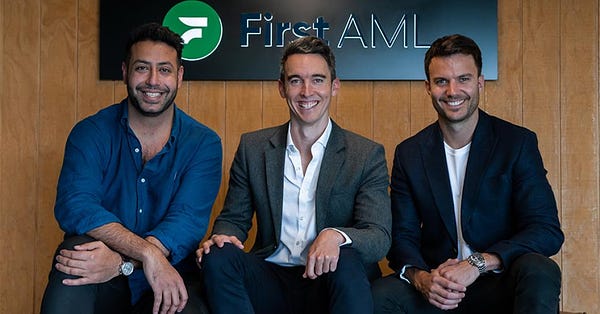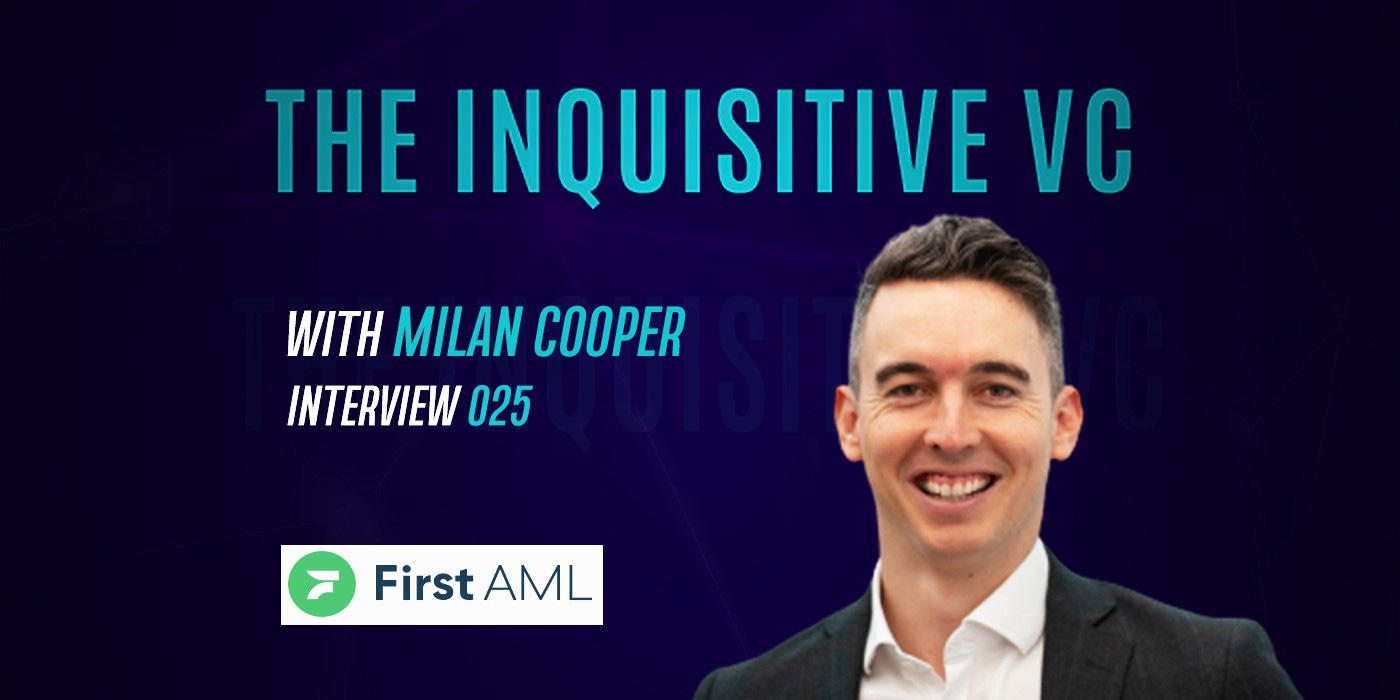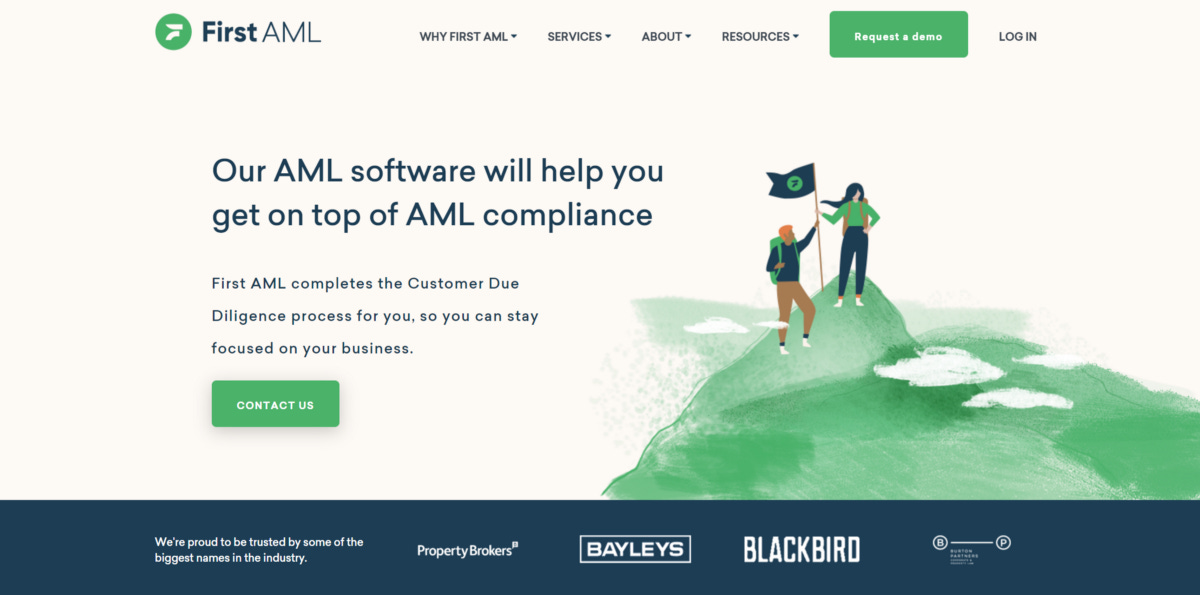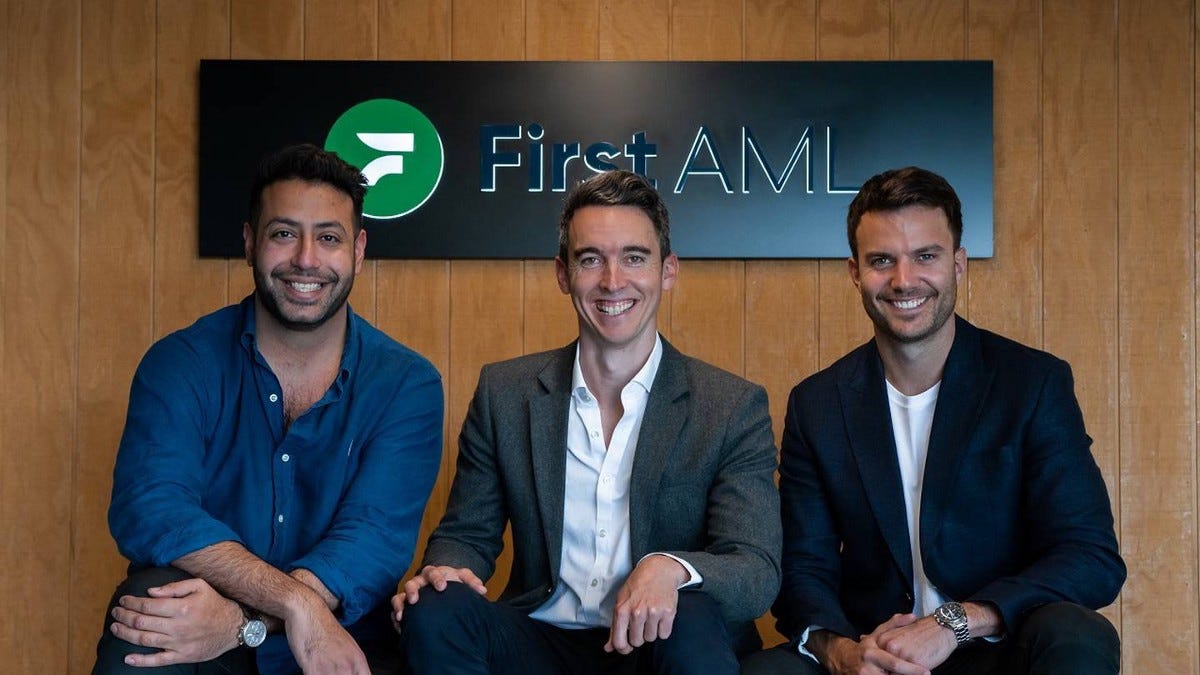Milan Cooper - First AML
We talk about Milan's journey to founding First AML with his co-founders, how they raised capital, company culture, his advice to new entrepreneurs and more!
Milan Cooper is a Co-Founder and CEO of First AML. First AML provides a platform to streamline anti-money laundering compliance for financial service providers, law firms, real estate agencies and accountants. The company has recently raised NZ$8M in a Series A round led by Bedrock Capital, with support from Pushpay founder Chris Heaslip and Icehouse Ventures.
We talk about Milan’s journey to founding First AML with his co-founders, how they raised capital, company culture, his advice to new entrepreneurs and more!
NA: Hey Milan, thanks for taking the time to chat! I wanted to start with your journey. You mentioned you did engineering; how did you end up being a founder of First AML?
MC: No problem. Yeah, for sure. I did Engineering at the University of Auckland and I went into intellectual property law after engineering. I worked in an IP law firm and became a registered patent attorney. That was cool, it was the first phase of my career and that was for five years here in Auckland.
Then I was finding that out I was just super interested in business, more interested in how my clients were solving business problems rather than IP problems. So, I thought it was time to get some formal business education.
I went to do an MBA at Cambridge. I did that to pivot my career and that got me into management consulting. After the MBA I spent some years with Bain and Company, which is a global management consulting firm.
That was insane in terms of learning so much in a short space of time and building a good business toolkit. Understanding how to solve problems and understanding how to just get stuff done. I knew early on at the end that I didn’t want to be a career consultant, but I wanted to learn a lot and then ultimately start my own business.
I returned to New Zealand and started talking to people in my network and came across my co-founders, Chris and Bion. Chris, I went to high school with and Bion worked with Chris at ANZ. This idea of First AML came out of the pain that’s involved in the AML process and they knew it quite well from working at ANZ.
NA: That’s very interesting, I didn’t know you were a Patent Attorney. This is your first time as a founder and a CEO, what is the most difficult part of your role as a CEO and first-time founder in your experience?
MC: Yeah. I guess the most difficult part is you have to float across so many different aspects of the business, and as a startup CEO, you’re not just sitting in a nice corner office dealing with very high-level things, you have to get your hands dirty as well.
I think the most challenging part is constantly jumping in and out of different things like that. My day is so diverse because there’s just so much on the go and, at this point in our journey, we don’t even have an HR manager, for example. So, I’ll get involved in HR and wearing all those multiple hats is difficult, but it’s also quite enjoyable.
NA: What’re the biggest challenges that you’ve experienced in scaling the team as the business is scaling as well?
MC: What we’ve really learned is that there are inefficiencies in hiring more people. There are more communication layers and as you add more people to the team, you think that you’re getting a one for one increase in efficiency, but you’re actually getting 0.9 or something because there’s more communication that has to happen between team members.
So that’s sort of a challenge in terms of scaling up the team and trying to remain efficient as you do it.
NA: How much do you personally think and focus on creating and maintaining the company culture?
MC: A lot. It’s one of my key responsibilities as CEO, to set the vision of the company and foster a culture that’s going to help us reach that vision. A big piece of work I’ve done over the last 12 months is helping define our company values.
I’m using those values as a genuine tool in our company to reward good behavior and recruit the right people and define an organizational framework for what we want to be as a company. Yeah, culture is massive for us. We want people to have fun at work, but we also got a lot of work to get done.
If we’re going to be successful, we need to get exceptional results out of our people. So, we’re trying to foster a fun, but execution-focused organization.
NA: That’s insightful. While you were working on the company in the early days, when did you and your co-founders decide you need external investment and then what was the process you went through?
MC: Yeah. So, it was early on. I’m quite happy with how we approach things. We managed to spin up an MVP without external investment. It was a very clunky and manual process, but we managed to get our first customers and prove that there was demand for what we were doing, but we knew that it wouldn’t scale well.
We quite quickly started talking to the investor networks in New Zealand first and foremost, and that was The Icehouse. We didn’t know much about raising capital, so we sort of had a crash course on that and managed to get a pre-seed round done in March 2019.
That was with an MVP and some foundational customers. We had a pretty good start. Our MVP served us well, we managed to prove the demand early and it enabled us to talk to investors and show, “Hey, we’ve got a genuine business on our hands here, this isn’t just an idea.”
I think a lot of companies. will go to investors with just an idea and try and raise capital that way. That’s also fine, but even better, if you can already prove that people want to buy what you’re making.
NA: For sure. I think it’s been a month since you recently announced your successful Series A yeah. Congrats on that, I hear it’s one of the largest Series A’s in New Zealand.
MC: Yeah, thanks. It’s a significant amount of capital and we’re excited to be working with some really quality US investors. Our existing investors, including Chris Heaslip, who was behind Pushpay has been phenomenal and opened doors to other investment circles for us. We’re really happy with who we’ve got involved in the business.


NA: How different was the process of talking to US VCs compared to New Zealand VCs?
MC: Yeah, it was different. I mean, at the Series A level, the level of DD is much greater than seed rounds. The US investors did spend more time understanding the business and getting comfortable with things. Other than that, it was a similar process. Get a term sheet signed and then spend a couple of weeks in a DD phase.
NA: How long was the process?
MC: From initial conversations to closing the deal it was about six weeks. We were thinking about when do we raise next? We were planning on doing it in 2021, so we still had over a year of runway. We got introduced to Bedrock Capital and really thought it was a good fit there.
NA: How was your experience in the boardroom as a first-time founder and CEO?
MC: Yeah, it’s been great. We’ve got Mark Hurley and Chris Heaslip on our board along with the three founders and they are both successful entrepreneurs. They know what we’re going through and they’ve had a lot of experience from their own businesses.
They add so much value and wisdom to First AML. I only have positive things to say so far about the board process and the value it adds to the business. We do it monthly, which I think is a good cadence for this maturity of business because so much can happen in a month, so much can change.
We sit down for two hours every month and we have a really robust discussion about what we need to do and it’s working really well so far.
NA: What advice would you give a first-time entrepreneur who is trying to validate a new idea?
MC: Yeah, great question. We’ve learned a lot about that, and it’s probably said a lot, but you’ve just got to go talk to customers as soon as you can. What we did is we got some branding done, and we got a pitch deck made and we just started trying to get meetings with customers.
We wanted to appear to be an established business. We wanted to look professional, so we spent a bit of money upfront getting some nice branding done and spending some time really understanding what story we wanted to tell.
Then we just started talking to customers and started refining our offering and understanding what they wanted and what they’d be willing to pay for that. I think there’s no substitute for that. I think you’ve got to speak to customers. Ideally, you want to speak to customers before you start building stuff because you might build something and find out that no one wants it.
NA: Great advice. What is the vision that you have for First AML over the next five years, where do you see it going?
MC: Our long-term vision is to make customer onboarding secure, fast and frictionless. Customer onboarding today is clunky, paper-based, slow and frustrating for everyone involved. We want to eliminate the 30-page onboarding paper form that people have to fill out when they want to invest money or open a bank account.
Over the next five years, we want to help businesses digitize customer onboarding and obviously, AML is a massive component of that and that’s the core of our business. We’re really focused on giving our customers the ability to get their customers into their business quickly and efficiently.
NA: That’s a nice and clear vision. Once again thanks for taking the time to talk, Milan, I had a great time!
MC: Thanks for having me!







